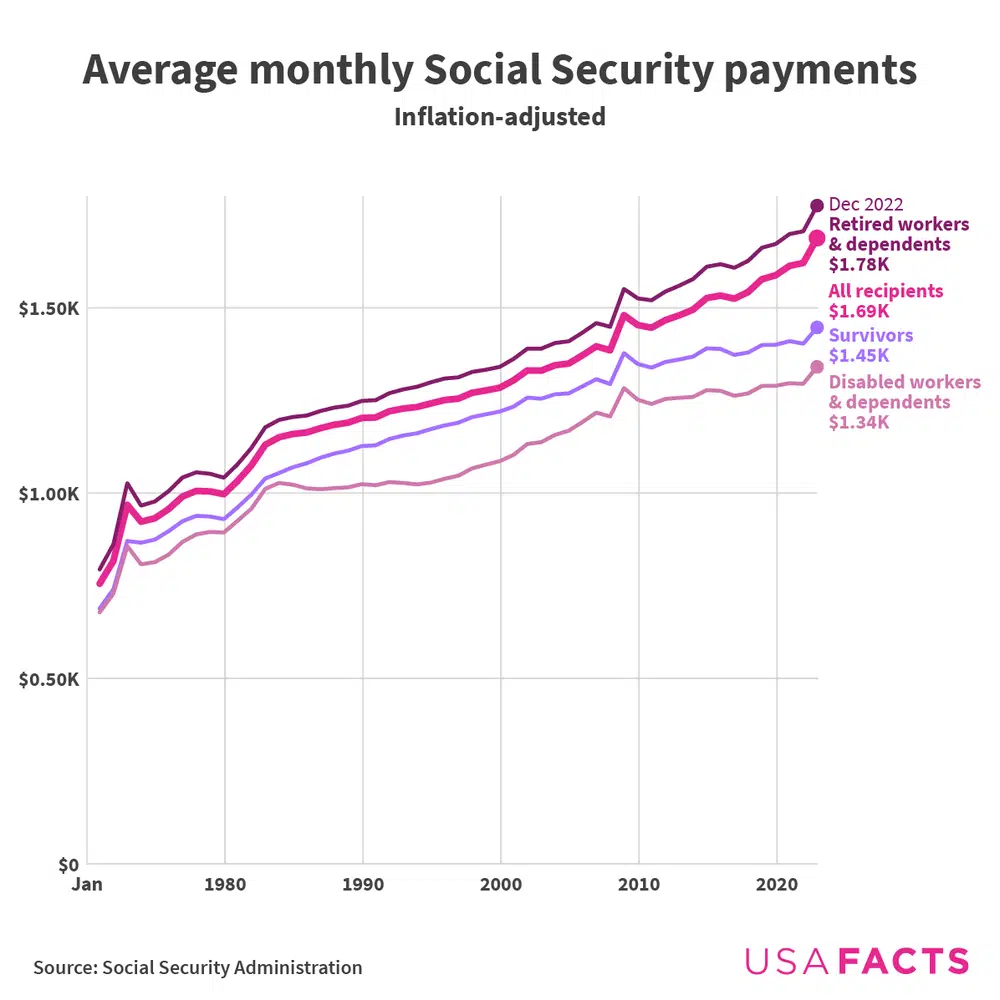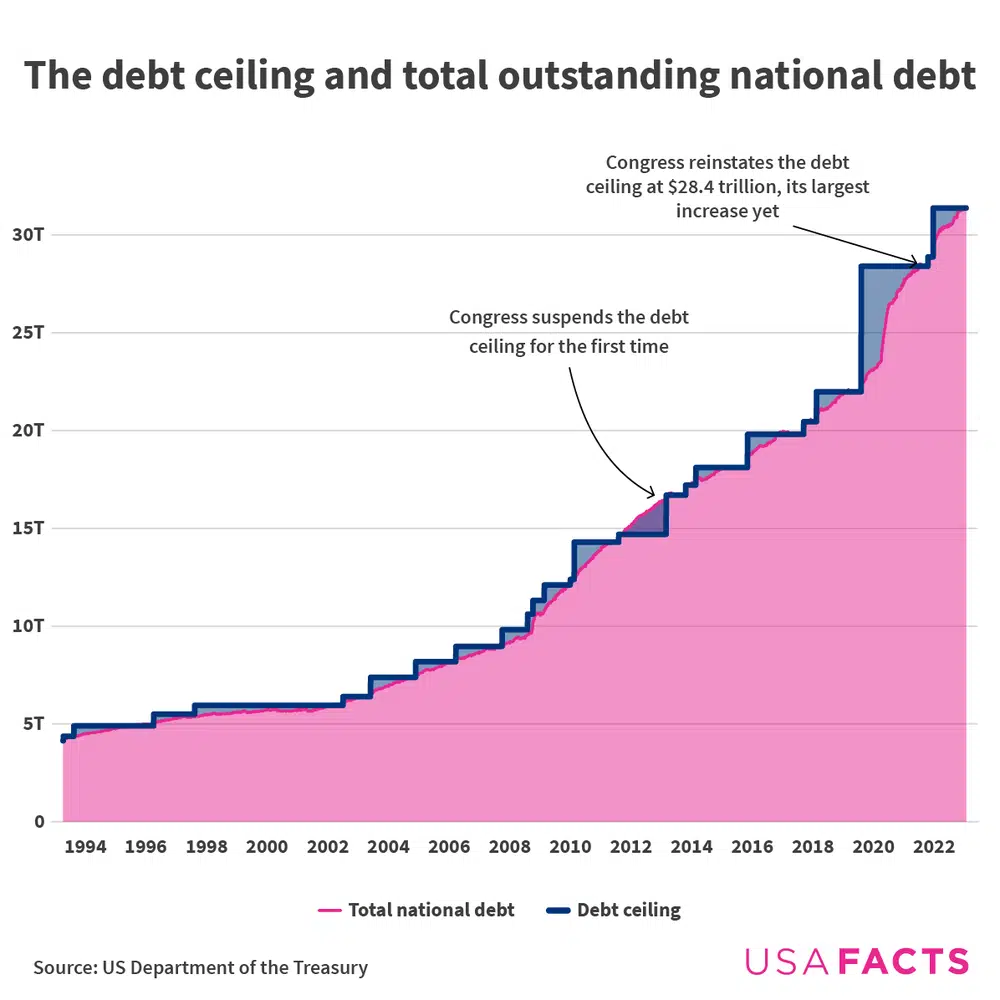Government spending
21 numbers that shaped 2021

As shareholders in this democracy, taxpayers deserve transparency in government spending. This year’s USAFacts 10-K report provides something we haven’t seen before as a nation: a local, state, and federal accounting of spending and revenues in the first year of the pandemic.
This 10-K is also a key document to consult given the current debt ceiling debate — a heated discussion that could benefit from some cooler, data-driven perspectives.
Here are some things to keep in mind when looking over the report:
Spending, entitlements, and Social Security
Mandated spending for Medicare, Social Security, and other major federal programs accounted for 75% of federal expenditures in fiscal year 2020.
Social Security, the biggest mandatory spending program of all, was 19% of all federal spending the past fiscal year (or $1.2 trillion). Social Security has a trust fund that is supported by a portion of the payroll tax. Yet the tax only generated $1.1 trillion for Social Security in fiscal year 2022. Social Security old-age and disability benefits are rising faster than incoming revenues; this 10-K notes that the trust fund could be depleted as early as 2031.

An empty trust fund and insufficient receipts to cover expenditures could trigger a conflict between two federal laws. The Congressional Research Service has advised that beneficiaries would still be entitled to their full scheduled benefits under the Social Security Act.

Even if the program made timely but reduced payments, recipients could take legal action to claim the balance of their benefits. Yet the Antideficiency Act prohibits the government from spending more than it has available, so the Social Security Administration would not have legal authority to pay benefits on time. It’s unclear what would win out, but civilians and lawmakers need to have substantive discussions about how reduced funding could affect them — and soon.
The debt ceiling
We can’t have this discussion without talking about government debt. Federal debt held by the public increased from $15.7 trillion in 2019 to $22.4 trillion in 2022, up 43%.

Congress last raised the debt ceiling in 2021. The United States hit the $31.4 trillion limit in January. The Treasury has used extraordinary measures to help pay federal obligations since then, with the treasury secretary declaring a debt issuance suspension period to hold some payments. That means, among other things, delaying investing in civil service and Postal Service retirement funds.
In a time of disagreement, we hope Americans can use this data spanning different presidential administrations to stand on the same factual footing, even if they debate how to take the next step.
Read the full letter from USAFacts Founder Steve Ballmer, and see the new report here.
Data behind the news
Midwestern and New England cities dealt with air quality issues over the past week. How is air quality measured, and which cities tend to have the best and worst air? Find out here.
Idaho has banned traveling out of state for abortions, and Florida just banned obtaining an abortion after the first six weeks of pregnancy. This article from last summer gathered data on the percentage of abortions in a state obtained by non-residents.
If it’s Monday, it’s the weekly fact quiz.

In June 2022, videos demonstrating how to start some Kias and Hyundais using a USB charger went viral on TikTok. Around the same time, car thefts started rising in Baltimore, Cleveland, and other cities. By December, Kias and Hyundais were at least 25% of all stolen cars in 12 of the 19 cities that shared data with USAFacts. Denver, however was ahead of the trend, with thefts doubling about 18 months prior.
Newsletter
Keep up with the latest data and most popular content.